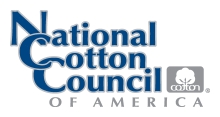 2016 is expected to be another challenging year for the U.S. cotton industry according to the National Cotton Council (NCC).
2016 is expected to be another challenging year for the U.S. cotton industry according to the National Cotton Council (NCC).
NCC Vice President for Economics & Policy Analysis Dr. Jody Campiche told delegates at the NCC’s 78th Annual Meeting in Dallas, Texas that the challenges will include low cotton prices, high global stocks and uncertainties regarding global mill cotton use.
“While world mill use is expected to exceed world production in 2016, global cotton stocks remain at high levels,” said Campiche.
Regarding domestic cotton mill use, USDA estimates U.S. mill use at 3.6 million bales, up 25,000 bales from 2014 and marking the fourth consecutive year of increased consumption. However, exports will continue a downward trend, with NCC estimating 2015 U.S. exports at 9.5 million bales, down 15.5 percent from 2014 and below the most recent USDA estimate. Campiche says, China’s imports are expected to fall further in 2016 to 4.75 million bales, down from 5.5 million in 2015. India is projected to continue as the world’s largest cotton producer and the second largest exporter in 2016.
Campiche projects an increase in ending stocks of 193,000 bales and notes that although world cotton stocks are projected to decline by 6.3 million bales in 2016, the reduction is not large enough to significantly reduce global inventories that begin the year at 103 million bales.
In her analysis of the NCC Annual Planting Intentions survey results, Campiche said the NCC projects 2016 U.S. cotton acreage to be 9.1 million acres, about 6.2 percent more than 2015. With abandonment set at 11 percent for the United States, Cotton Belt harvested area totals 8.1 million acres. Using an average U.S. yield per harvested acre of 831 pounds generates a cotton crop of 14.0 million bales, with 13.4 million upland bales and 595,000 extra-long staple bales.
